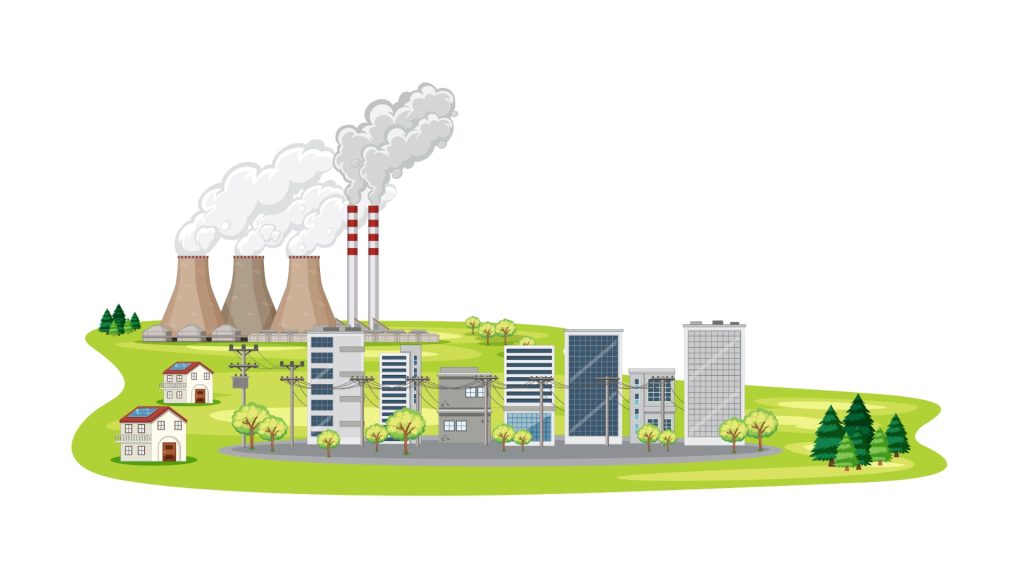According to a recent independent study by the Council on Energy, Environment, and Water (CEEW), India’s current climate policies cut CO2 emissions by nearly 4 billion tonnes between 2020 and 2030.
The policies are already assisting in bending its long-term emissions curve. This decrease is equal to almost 1.6 times the CO2 emissions of the European Union in 2023.
In light of India’s pledge at COP26 in Glasgow to cut emissions by 1 billion tonnes by 2030, this is a noteworthy accomplishment. 440 million tonnes of carbon dioxide (MtCO2) have already been saved by policies for India’s power, housing, and transportation sectors between 2015 and 2020, according to the study titled, Impact of Select Climate Policies on India’s Emissions Pathway.
India’s power sector has seen the largest reduction as a result of policy interventions, considering that it accounts for a larger portion of the nation’s carbon emissions than other sectors. India must continue to advocate for climate policies and increase its decarbonization efforts over the next few decades in order to reach its net-zero target by 2070.
CEEW assessment:
According to CEEW assessment, India’s climate policies have had the following impact:
- Reduced emissions overall
- Encouraged the country to use more renewable energy sources in its energy mix
- Boosted the use of electric vehicles, and
- Increased the energy efficiency of lighting and air conditioning in homes.
Additionally, CEEW also explored the impact of policies such as the National Solar Mission, FAME I & II schemes, Standards & Labelling scheme, and UJALA program on future energy supply and demand.
According to the study, policies that support renewable energy are predicted to reduce coal-based electricity generation by 24% in the power sector alone by 2030, compared to a scenario in which no policies are implemented.
Data:
This is the same as avoiding the installation of 80 GW of coal-based power plants that would have been necessary to supply India’s growing demand for electricity.
With the exception of large hydro, India currently has an installed RE capacity of about 155 GW. Furthermore, the combined percentage of solar and wind power in India’s energy mix is expected to increase from about 3% in 2015 to 26% by 2030 and 43% by 2050 with strategic support and competitive tenders.
This will significantly lessen the nation’s dependency on coal, which presently accounts for almost half of its carbon dioxide emissions. Although this change is essential for bending India’s emissions curve downward, even more aggressive action will be needed to reach net zero by 2070.
Policies like the FAME (2015–2022) schemes have paved the way for the electric vehicle market to grow significantly in the transportation sector, according to the CEEW study. According to projections, sales of electric two-wheelers and four-wheelers may account for 19 and 11% of their respective market shares by 2030. This could result in a 13% decrease in the demand for gas and oil this decade.
In comparison to the no policy scenario, these numbers are anticipated to increase significantly to over 65% by 2050 for both EV categories, which would result in a 55% decrease in the sector’s demand for gas and oil.
The 2006 Standards and Labeling program has significantly increased the energy efficiency of air conditioning and cooling systems in the residential sector.
Consumer impact:
According to the CEEW study, electricity consumption in Indian households related to air conditioning is expected to double between 2020 and 2030 before increasing by nearly ten times by 2050.
In addition to hotter summers and higher incomes, this growth would also be fueled by lower electricity costs as a result of increased use of renewable energy. In contrast, the UJALA program is expected to cut residential lighting electricity use by 48% by 2030 and 59% by 2050 compared to the no policy scenario.
This is because the program has promoted and distributed over 367 million energy-efficient LED bulbs since 2015.
Thought leadership:
Dr Vaibhav Chaturvedi, Senior Fellow, CEEW, and lead author of the study, emphasised the importance of enhancing existing policies: “Our findings show that current policies have set India on the right path. New policies that build on existing climate policies are already being formulated to accelerate efforts to meet the 2070 net-zero target. Immediate steps should include scaling up investments in renewable energy, enhancing the domestic Carbon Credit Trading Scheme, and focusing on energy efficiency in key sectors like industry, transport and buildings. The recently announced PM-EDRIVE scheme will build on the gains made by the FAME initiative, accelerating the adoption of electric vehicles and driving deeper emission reductions in the transport sector. These actions will be instrumental in decisively bending India’s emissions curve towards our net-zero goal and ensuring its energy security in the long run.”
Dr Arunabha Ghosh, CEO, CEEW, said, “India has demonstrated formidable climate leadership over the past decade, from scaling renewables to advancing energy efficiency and electric mobility through policies. This has not only diversified our energy mix and doubled down on energy security, but also created new markets and significantly cut India’s carbon dioxide emissions. The road to net zero needs bolder action, and the foot cannot be taken off the pedal now. To enable the Global South’s efforts, COP29 must ensure climate finance flows to developing countries like India, without riders. This would deepen renewable markets and a sustainable future for all.”
By 2050, solar and wind power are predicted to account for 43% of India’s total electricity production.
Additional policy improvements are essential to meeting India’s net-zero goals for 2070.
The CEEW report can be accessed here










